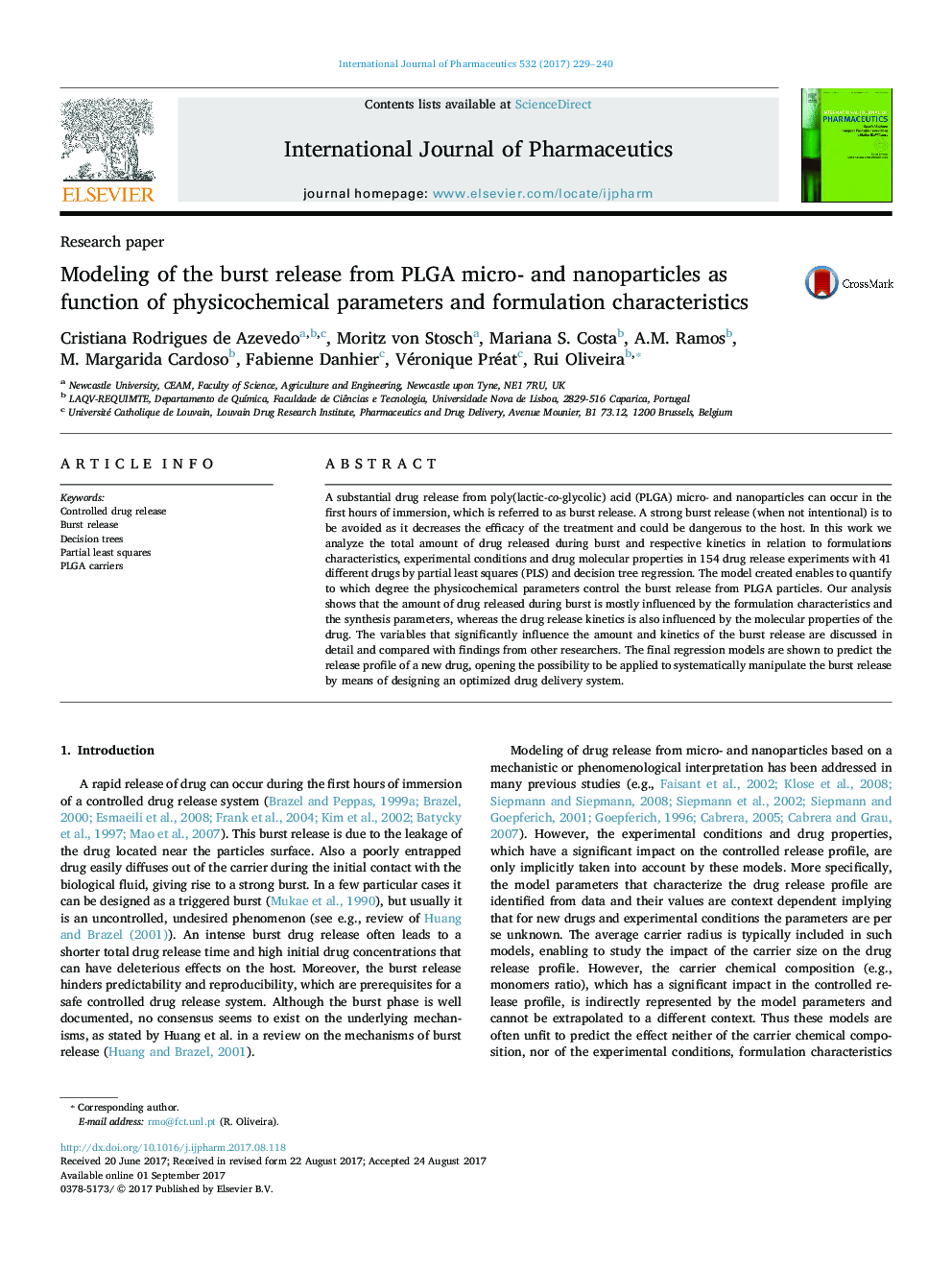| Article ID | Journal | Published Year | Pages | File Type |
|---|---|---|---|---|
| 5550018 | International Journal of Pharmaceutics | 2017 | 12 Pages |
A substantial drug release from poly(lactic-co-glycolic) acid (PLGA) micro- and nanoparticles can occur in the first hours of immersion, which is referred to as burst release. A strong burst release (when not intentional) is to be avoided as it decreases the efficacy of the treatment and could be dangerous to the host. In this work we analyze the total amount of drug released during burst and respective kinetics in relation to formulations characteristics, experimental conditions and drug molecular properties in 154 drug release experiments with 41 different drugs by partial least squares (PLS) and decision tree regression. The model created enables to quantify to which degree the physicochemical parameters control the burst release from PLGA particles. Our analysis shows that the amount of drug released during burst is mostly influenced by the formulation characteristics and the synthesis parameters, whereas the drug release kinetics is also influenced by the molecular properties of the drug. The variables that significantly influence the amount and kinetics of the burst release are discussed in detail and compared with findings from other researchers. The final regression models are shown to predict the release profile of a new drug, opening the possibility to be applied to systematically manipulate the burst release by means of designing an optimized drug delivery system.
Graphical abstractDownload high-res image (139KB)Download full-size image
